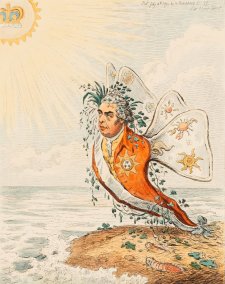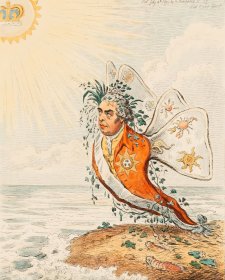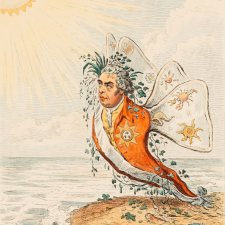James Gillray, caricaturist and printmaker, was born in Chelsea and learned the art of engraving as a youth in London. After a period with a troupe of strolling players, he began to study at the Royal Academy, paying his way by engraving. He published his first known caricature in 1779. About ten years later, he formed a permanent professional partnership with Hannah Humphrey, publisher and printseller; they were to work together and share accommodation for twenty years. He not only sold his prints through her shop, which prospered accordingly, but depicted her shop (which moved from Old Bond Street, to New Bond Street, to St James Street) in his prints. Many of Gillray’s cruellest satires were directed at George III and his family. Early in his career he treated Whigs worse than Tories overall (because Tories, being more affluent, were more likely to buy his works), but from 1801 onwards he attacked both sides with equal vigour. Any study of eighteenth-century English life, costume, the Court or politics must turn, at some point, to the works of Gillray, in which the inscriptions constitute a vital complement to the images. Having lost his sight, and having attempted suicide by leaping from the upper window of the print shop, he lapsed into continuous insanity in 1811, to be cared-for by Miss Humphrey until he died in 1815. The Tate Britain mounted a major exhibition of his meticulously hand-coloured works, occupying ‘a kind of limbo between political history and art history’, in 2001.







